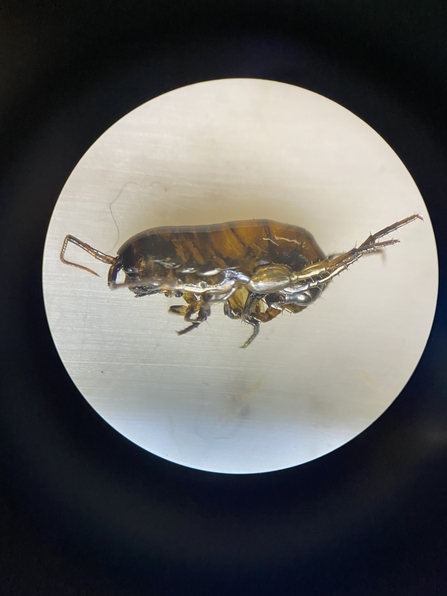
Clare Paine
Lawn Prawns are woodland detritivores (they eat dead plants) in their native Eucalyptus forest homes. Here in the UK they have been seen to be great recyclers, shredding leaves into compost at a furious rate. The upside to this is that this fast turn over of nutrients makes for a more fertile soil.
Like many non-native species there is a down-side to their presence. With fewer natural predators, the lawn prawn can reach large numbers and they are highly mobile, so can spread rapidly. By taking over the role of our native detritivores like springtails and earthworms, this could lead to significant displacement and even loss. There is a lot we do not know as the effects of the lawn prawn on our native habitats has not been widely studied.
It is likely the most serious effects will be on acidic woodland soils, where decomposition is normally very slow and a 10cm deep 'leaf mould' layer of compost would normally develop. This is a massive carbon store and habitat. The effects of supercharging the decomposition rate here could be to eventually turn large areas of low-fertility, high-carbon soils with a unique biodiversity into fertile, low-carbon soils with ubiquitous biodiversity. A lot more research should be undertaken to look into this.
It would be remiss of me not to say at this point that Lawn Prawns are harmless; they are neither poisonous nor do they bite.

